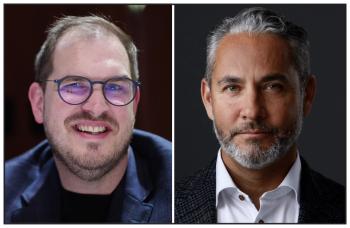Image Caption
Local Journalism Initiative Reporter
Windspeaker.com
Details about the National Indigenous Electrification Strategy were unveiled at the First Nations Major Projects Coalition (FNMPC) conference in Toronto April 23.
There are two main goals in the "Strategy to Accelerate Indigenous Ownership of Net Zero Infrastructure in Canada". One is to position Indigenous Nations as leaders in the net zero transition. And the second is to remove barriers, whether they be economic, political or regulatory, that get in the way of the development of Indigenous partners and Indigenous-led projects.
It’s no secret Canada’s energy grid will need to substantially increase in the coming years to meet demands, said Niilo Edwards, coalition CEO.
“We found some very constructive and helpful avenues to go down to ensure, as we look to electrify Canada and the infrastructure that is required, that we can do it with full Indigenous participation,” Edwards said.
Indigenous communities will undoubtedly be required to assist.
“Our whole framework was built without the participation of Indigenous Nations in mind,” he said. “We have to start changing that. And we are. But, when you compare the steps taken against the goals that Canada and the rest of the world have set on a net zero transition and electrifying the country, we’re not moving fast enough.
“And governments are going to need partners in Indigenous Nations to move this forward quicker. There will come a day soon where you will see a scenario where Indigenous Nations have partnered with developers and are bringing their own plans to governments and saying, ‘We are doing this on our lands.’ In order to electrify, governments are going to have to get with the program and support that.”
Edwards said it has been a long-held goal of the coalition to develop the strategy.
“We wanted to do it. And, to be frank, we couldn’t get it funded anywhere because I think various provincial and federal systems knew that the electrification situation in Canada wasn’t optimal for Indigenous participation.”
Edwards praised contributors, including the Ivey Foundation and the Clean Economy Fund, which made FNMPC’s strategy possible.
FNMPC is a national group comprised of more than 150 First Nations elected councils, hereditary chiefs, tribal councils and development corporations. Its technical team is active in supporting member communities with tools, capacity supports, and advice related to corporate structures and benefit sharing models, as well as tools to promote environmental protection and impact assessment.
The conference panel on the strategy included JP Gladu, founder and CEO of Mokwateh, an Indigenous-owned consultancy launched in 2020.
Gladu was asked about past Indigenous experiences on electrification and how that informs the conversation moving forward.
“Electricity has been largely generated on the backs of our communities… It’s a really difficult conversation to have with taxes and carbon taxes and inflation and the cost of living. Canadians have enjoyed the low cost of energy because of our territories,” he said.
But that’s going to change. Costs to produce electricity will rise.
“That’s just kind of the way it is because we have been enjoying the low costs for a while. But we need that energy. We need to meet the transmission demands and it’s going to cost,” Gladu said.
Though the strategy was released last week, Edwards said the coalition had prepared another report several years ago that examined about 60 domestic and international examples of Indigenous participation as partners, particularly as equity partners, either in transmission, generation or distribution projects.
“From there we started to apply the lessons learned from our research and our transactional support with our members on actual electrification projects,” Edwards said. “And FNMPC’s capacity support is designed to move at the pace of our members. So, we’re scalable.
“In some cases, we’re doing a whole suite of services from logistical and administrative support on the project to helping negotiate the commercial terms of the deal and the financing strategy on the economic side,” he said.
“And on the environmental side, ensuring that our members have the supports that they need to protect what is most important on the land and to be effective and influential in the regulatory process.”
A successful example of an electrification project that Edwards singled out is the Fort Nelson First Nation in British Columbia, which is championing geothermal. This initiative is noteworthy as it is 100 per cent Indigenous led, with no private sector partner involved.
“We’re going to see more of that going forward,” Edwards said. “And that’s what FNMPC is preparing for in terms of our capacity support to our members. It’s not only the partnership with the private sector but the ability of Indigenous Nations themselves to become the proponent and lead their own projects.”
To read more about the coalition, go to https://fnmpc.ca/
Local Journalism Initiative Reporters are supported by a financial contribution made by the Government of Canada.

